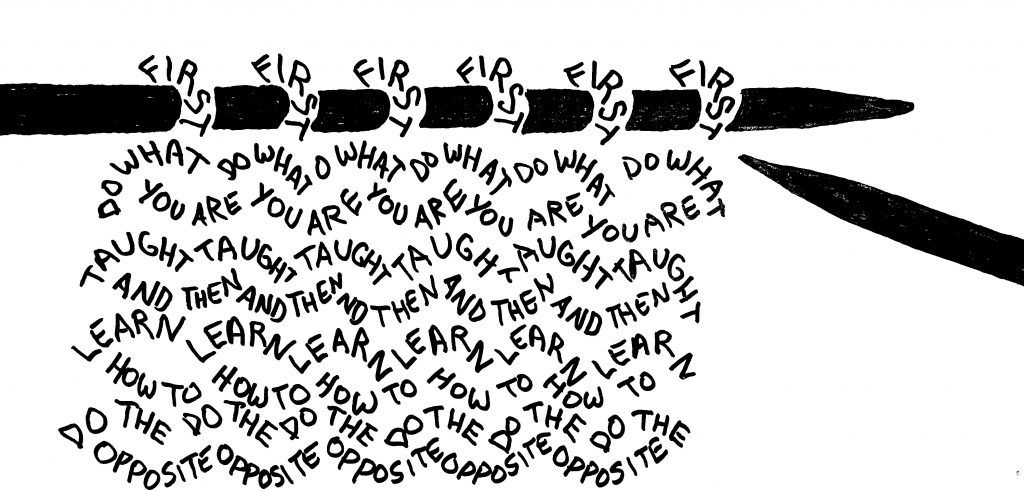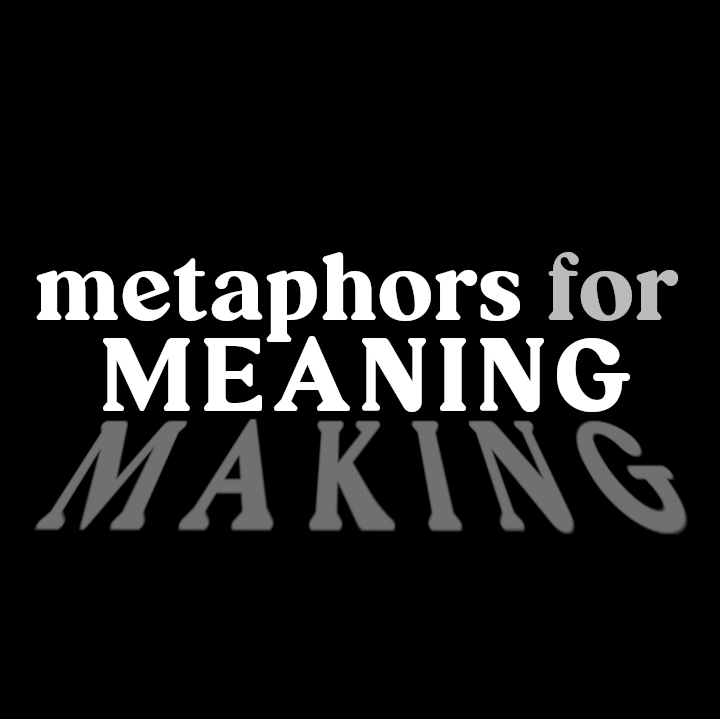Hello! We’re still in a Pandemic here!
Stay Home and Purl!
The world we live in has so many colors and textures which are all made up of the same basic elements. And the crafts we do have so may awesome ways of reflecting this. In knitting, all the patterns and textures you see are actually only made up of two stitches: knit and purl.
The knit stitch is usually the first to be taught, hence the name “knitting.” It’s obviously seen as the normative stitch which is an interesting thing to contemplate all on its own. If the first stitch to be invented had been the “purl,” I guess knitters today would be called purlers!
But it makes sense that the knit stitch is the norm since it really is an easier set of motions. You can do a lot with just the knit stitch. But eventually you’ll want to create something more complicated. And to create a complex pattern you need to be able to KNIT and PURL: to do what you are first taught and then to learn the opposite.
But is it really the opposite? For the purl you go into the stitch from the front instead of the back, and you go from right to left instead of left to right. And you wrap the yarn right to left instead of left to right. Which all seems opposite. But really it’s all mirrored.
Cause that’s what a purl stitch is, the mirror version of a knit stitch. But it’s hard to see that when you are just beginning. It’ll seem as foreign as the knit stitch when you first started. Knitting and purling are all about controlling the texture of the stitch, where the “bump” goes–on the front or back of the fabric in front of you. Once you learn to knit and purl, you can learn to make countless new patterns and designs by combining these two in different ways.
The different patterns of knitting: stockinette, garter, and a gazillion other stitch combos are all created based on when and where you are knitting versus purling. Like when you combine knits and purls in the same row in certain repetitions you can get ribbing which help keep your socks on and your sleeve ends cozy.
That’s an interesting thought–controlling where the bump goes. Like a push versus a pull. In gardening, I dig a hole. But I better learn how to fill the hole, too, if I want the seeds I’ve planted to grow. I have to learn one thing and then learn the opposite, or mirror thing, to bring something to fruition.
I like both sides of this thinking. Opposite and Mirror. Because it’s important for me to realize I need to learn something completely different than what I was taught or brought up to think in order for me to have a better understanding of the world.
It’s also important for me to realize that that seemingly “opposite” thing, whatever it is, is the understanding of another person in my human family. Someone different, but the same, someone with hurts and fears and desires, someone like the person looking back at me from the mirror. It’s interesting that we tend to reject what we think of as opposite while we accept what is in the mirror. But I don’t have to accept or affirm that opposite thing if it goes against my core values — like racism, homophobia or nazism. But phobics can usually only overcome fears when they better understand where their fear comes from.
Sometimes we really do need to learn something and then learn the exact opposite thing in order to create something that is even more meaningful and grounded in all of our realities. To craft a better world, we have to be prepared to learn new stitches.

Possible Questions/Further Thoughts to Explore
What comes up for you in contemplating the differences, similarities, and tensions between the idea of the “opposite” versus the “mirror” or reflection of something? Why do you think we push certain seeming opposites away? might it be because they reflect or mirror something back at us about ourselves that makes us uncomfortable?
Of course we can be super critial of our mirrored self, too. Unhealthfully so. How does that fit in to this idea of thinking about the tensions between opposite and mirrored? Do we sometimes want to push away what we see in the mirror? How and why does our culture push us to reject some parts of ourselves and embrace others? (hint: most likely the answer lies in predatory capitalism, white supremacy, and patriarchy!)
Another theme to explore is the need to understand something, whether deemed opposite, mirrored, or othered in any kind of way — in order to better collaborate, integrate, or, often more necessarily in these movement times, dismantle it. For example, in order to dismantle white supremacy in institutions all around me, I have to better understand where it comes from, how it shows up, including within myself and my family. (That means I need to take a serious look in the mirror). In order to reach those who still struggle with understanding their white skin privilege or how white supremacy shows up pretty much everywhere, I also need to be able to do what I can to engage with people’s ingrained fears and systemic white supremacy indoctrination to build relationships with those I see as “opposite” to me (conservatives, racists etc.). Part of that is learning the “opposite” from my understandings — trying to better see other people’s point-of-views so I can ask more meaningful questions that will hopefully get at helping them to transform their way of thinking. But also seeing their fears as a mirror, too. Because, no matter how progressive or enlightened or “woke” I think myself, growing up in a dominant white culture steeped in white supremacy thinking makes it impossible for me as a white person to not have racist inclinations, despite my possible ongoing work to override them). How can I reach them with my curiosity, my love, my desire for us to find our mutual interest in dismantling oppressive systems that harm us all? This is the work of crafting a better world, too.
